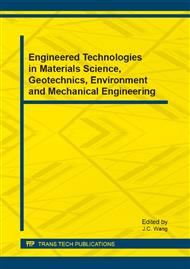p.244
p.249
p.253
p.258
p.262
p.266
p.269
p.273
p.280
Effect of DC Supply Voltage on Eddy Current Loss in Permanent Magnet of Permanent Magnetic Synchronous Motor for Electric Vehicle Application
Abstract:
The 2-D time-stepping finite element method is adopted to systematically analyze the effect of DC supply voltage of inverter on eddy current loss in permanent magnet of PMSM for EV application. The finite element model and inverter model are built to calculate the winding currents, eddy current losses in permanent magnet and air-gap flux densities with different DC supply voltages when the motor runs in flux-weakening area. Analysis shows that, the eddy current increases significantly with the increase of DC supply voltage, although the fundamental winding current decreases. The temperature-rise experiment of permanent magnet is carried out, proving the validity of analysis.
Info:
Periodical:
Pages:
262-265
Citation:
Online since:
February 2013
Authors:
Price:
Сopyright:
© 2013 Trans Tech Publications Ltd. All Rights Reserved
Share:
Citation:


